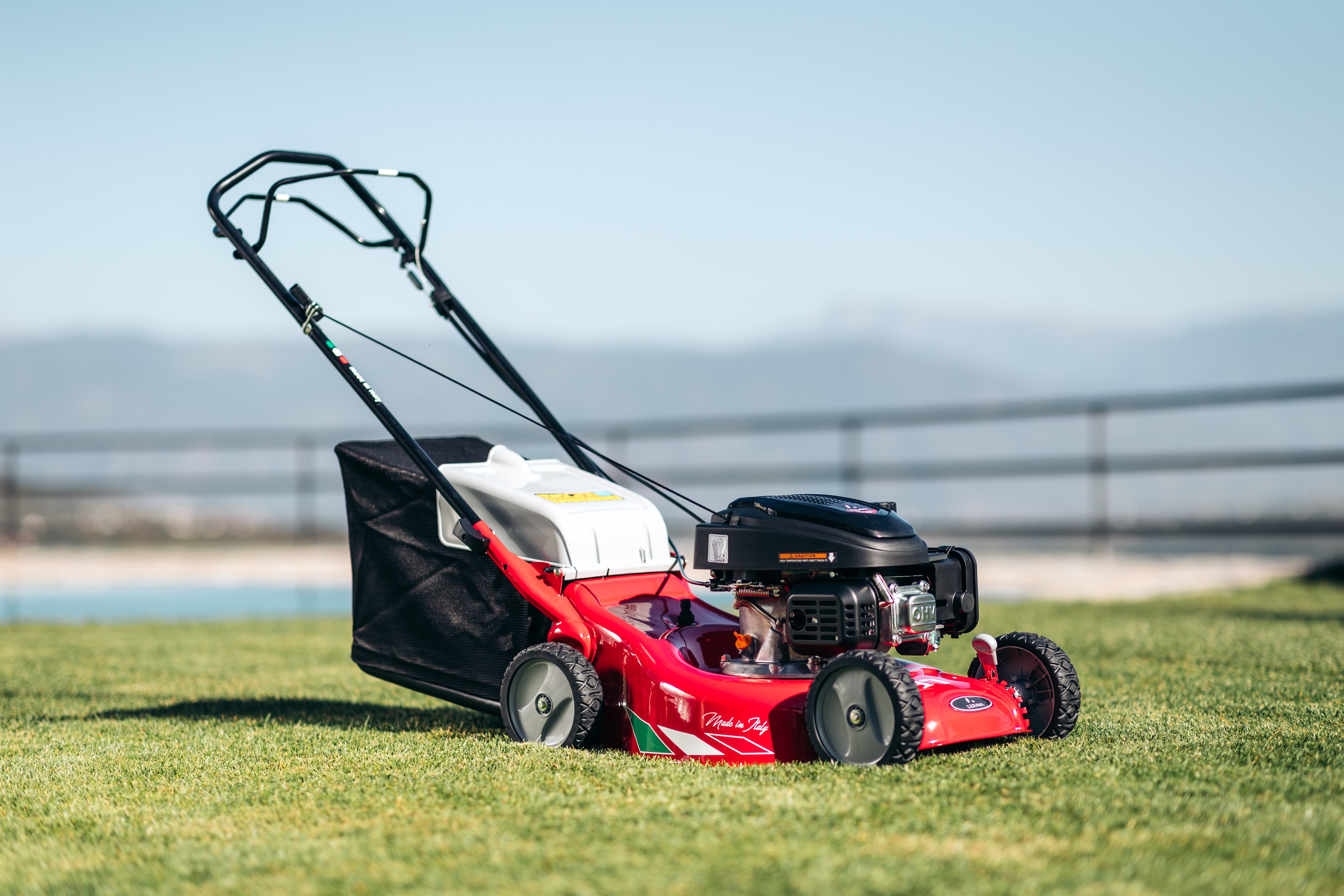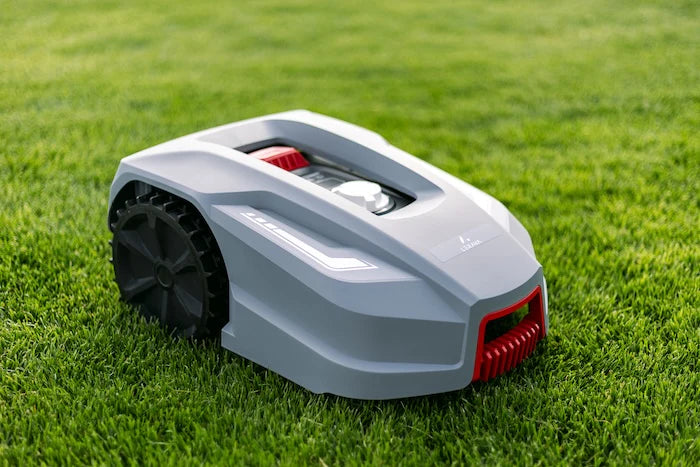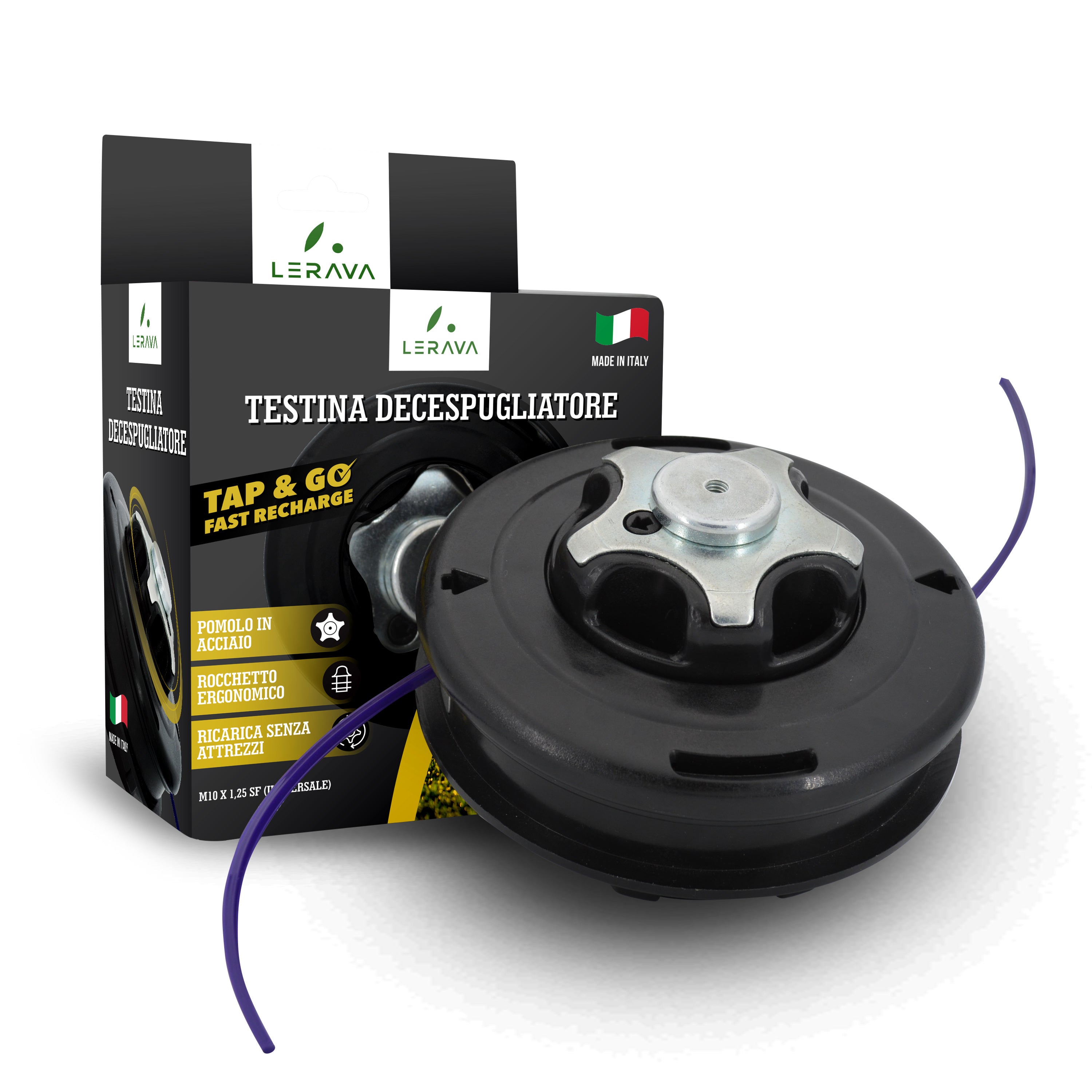Measuring the diameter of the brush cutter head correctly is essential to ensure compatibility with the shaft and motor of the brush cutter itself. Using a head with the wrong diameter can compromise the efficiency of the tool and, in the worst case, cause damage or malfunctions. Let’s go through how to take accurate measurements and which tools and specifications to consider.
Necessary Tools
To accurately measure the diameter of the brush cutter head, the main tool to use is a vernier caliper, which allows precise measurements down to a tenth of a millimeter. The caliper is essential as it ensures accuracy and helps avoid common errors from using less precise tools like rulers or measuring tapes.
Steps to Measure the Diameter of the Head
- Remove the brush cutter head: First, disassemble the head by unscrewing the central nut that holds the head to the tool shaft. Be careful: some models may have a left-hand thread, so make sure to turn it in the correct direction to unscrew it.
- Clean the head: Ensure the head is free of grass or dirt residues that could interfere with the measurement.
- Measure the outer diameter of the head: Position the caliper tips on opposite ends of the head and close the caliper until it gently touches both sides.
- Measure the central hole of the head (nut thread): Another important measurement is the diameter of the central hole where the fixing nut fits. Use the caliper to measure this hole. Insert the inner tips of the caliper into the hole and open it until it touches the opposite walls.
Types of Nuts
The nut that connects the head to the shaft can vary depending on the brand and model of the brush cutter. Generally, the fixing nuts fall into two main types, distinguished by the central hole size and thread pitch:
M8 x 1.25 left-hand thread: This nut has a diameter of 8mm and a thread pitch of 1.25mm. It is one of the most common and is often used on small to medium-power brush cutters. The left-hand thread means that to tighten the nut, turn it clockwise, and to loosen it, turn it counterclockwise, the opposite of standard nuts.
M10 x 1.25 left-hand thread: This nut has a 10mm diameter and the same 1.25mm pitch. It’s larger and generally used on more powerful brush cutters. This model also has a left-hand thread.
M12 x 1.5 left-hand thread: This type of nut is less common but can be found on professional or high-powered machines. The diameter is 12mm, and the thread pitch is 1.5mm.
Right-hand threaded nuts: Though less common, some brush cutters, especially those from specific brands or older models, may have right-hand threaded nuts (they tighten by turning counterclockwise). It’s important to check whether your model uses a left or right-hand thread before purchasing a new fixing nut.
Important Considerations
- Compatibility: It is essential to ensure that the diameter of the head and the fixing nut are compatible with your specific brush cutter model. A mistake in these could cause excessive vibrations during use or even damage the tool.
- Material quality: When replacing parts like the head or nut, it’s always advisable to choose original or high-quality compatible parts to ensure the durability and performance of the brush cutter.
- Thread pitch importance: In addition to the nut diameter, it’s crucial to respect the thread pitch, which indicates the distance between the thread spirals. Using a nut with the wrong pitch could make it impossible to correctly fix the head.
Conclusion
Measuring the diameter of the brush cutter head is a simple task, but it requires attention and precision. Using a caliper to take accurate measurements of the outer diameter and central hole is essential to ensure component compatibility. Always check the type of nut required and whether the thread is left or right-handed to purchase and install a new head or replace the fixing nut correctly.

![#Taglia_1.7kg [sku-A0291] [lang-IT] [lang-EN]](http://lerava.com/cdn/shop/files/Cessione_IT.png?v=1749635507&width=2000)
![#Taglia_1.7kg [sku-A0291] [lang-IT] [lang-EN]](http://lerava.com/cdn/shop/files/Cessione_IT.png?v=1749635507&width=104)
![[lang-IT] [lang-EN]](http://lerava.com/cdn/shop/products/B09SLG7DHN.MAIN.jpg?v=1674813929&width=104)
![#Taglia_70m² [sku-VV-KMTV-QLBE] [lang-it] [lang-en]](http://lerava.com/cdn/shop/files/Primavera_IT_1.png?v=1749609539&width=104)
![#Taglia_100m² [sku-A0360] [lang-IT] [lang-EN]](http://lerava.com/cdn/shop/files/ESTATE_IT_100m.jpg?v=1751879953&width=104)
![#Taglia_70 m² [sku-A0016] [lang-it] [lang-en]](http://lerava.com/cdn/shop/files/Add_a_heading.png?v=1758461245&width=104)
![[lang-IT] [lang-EN]](http://lerava.com/cdn/shop/files/Solfato_Di_Ferro_IT_1.png?v=1749608449&width=104)
![#Taglia_30m² [sku-AVARACH] [lang-IT] [lang-EN]](http://lerava.com/cdn/shop/files/Champion_IT.png?v=1749608049&width=104)
![#Taglia_30m² [sku-A0265] [lang-IT] [lang-EN]](http://lerava.com/cdn/shop/files/Express_IT_1.png?v=1749619514&width=104)
![#Taglia_10m² [sku-A0148] [lang-IT] [lang-EN]](http://lerava.com/cdn/shop/files/1_10_IT.jpg?v=1727419569&width=104)
![#Taglia_20m² | 200g [sku-A0192] [lang-IT] [lang-En]](http://lerava.com/cdn/shop/files/1_1_193571c2-dc92-488a-b9ac-170592f0b658.jpg?v=1744210602&width=104)
![#Taglia_200g [sku-A0220] [lang-IT] [lang-EN]](http://lerava.com/cdn/shop/files/IT_Semi-Trifoglio200g.jpg?v=1756610388&width=104)






